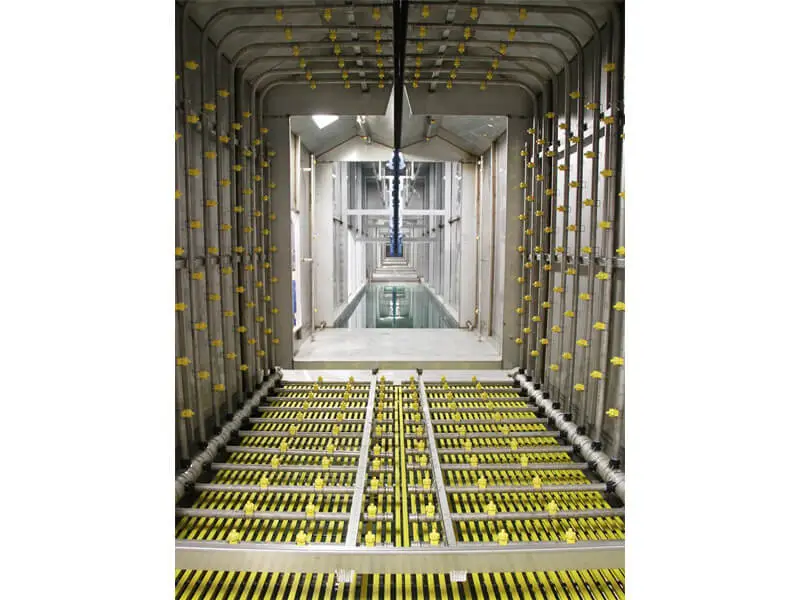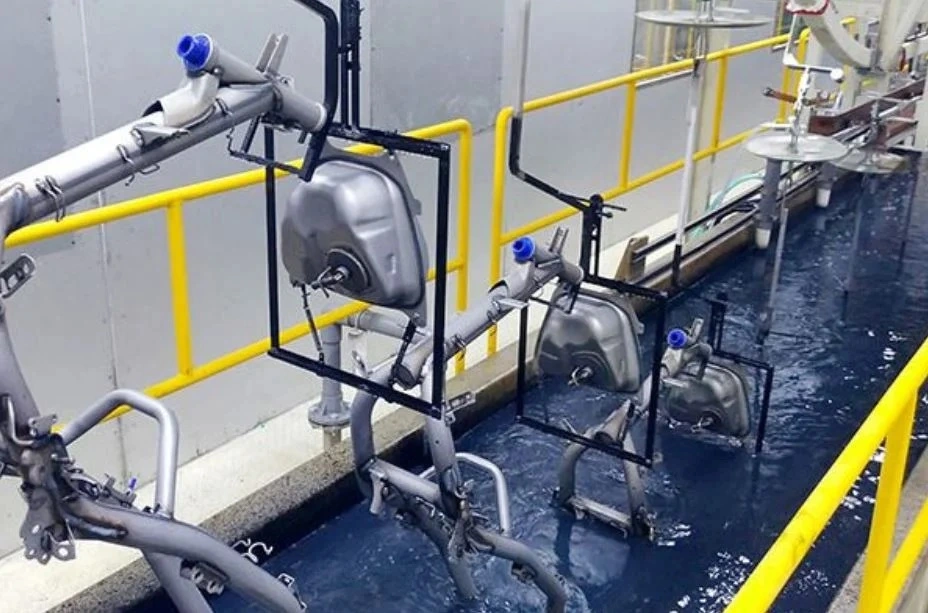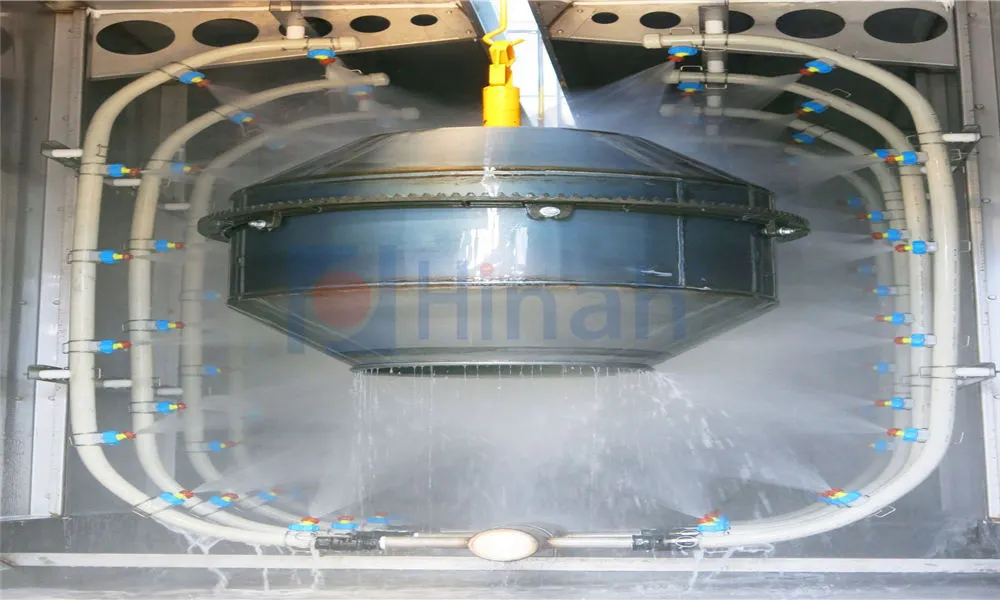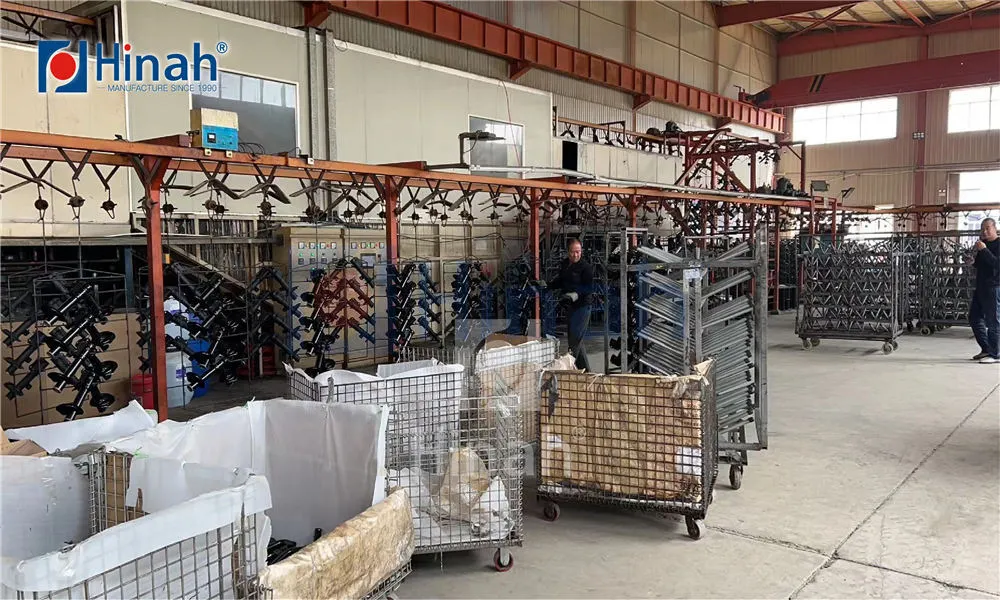In the evolving world of industrial manufacturing, efficiency and quality are paramount. One technology that has steadily gained traction for its ability to deliver both is the robotic paint sprayer. These automated systems are not just a luxury but a necessity for many businesses aiming to streamline operations, reduce waste, and achieve flawless finishes. Whether you're in automotive, aerospace, or furniture production, understanding the ins and outs of robotic paint sprayers can significantly impact your bottom line. This article dives deep into what makes these systems tick, their practical applications, and how to make informed decisions when integrating them into your workflow. By the end, you'll have a clear picture of why a robotic paint sprayer is more than just a machine—it's a game-changer for modern industry.
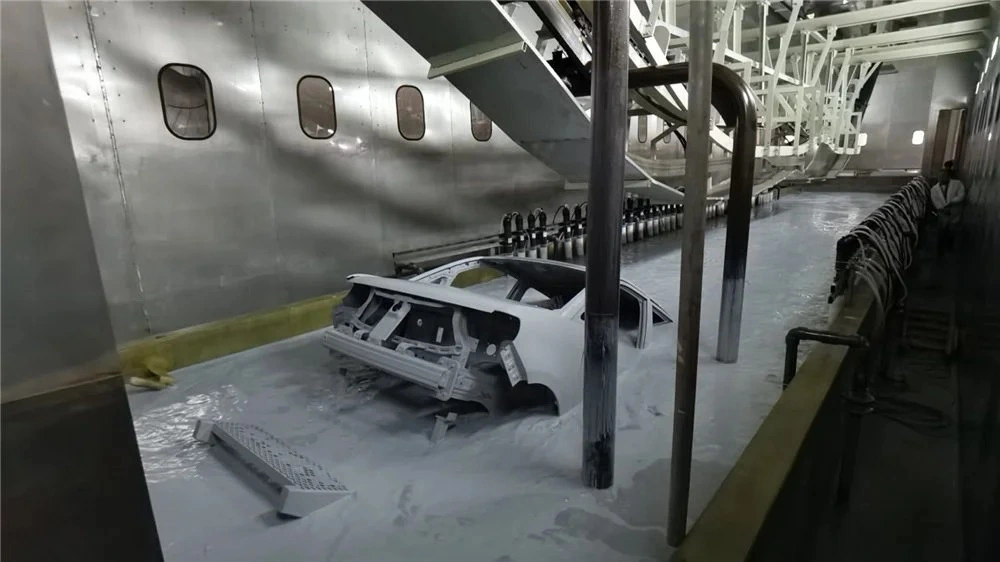
What Exactly is a Robotic Paint Sprayer?
A robotic paint sprayer is an automated device designed to apply coatings, paints, or finishes to various surfaces using programmable robotic arms. Unlike manual spraying, which relies on human skill and consistency, these systems operate with precision through advanced software and sensors. Typically, a robotic paint sprayer consists of a multi-axis robot arm equipped with a spray gun, a control unit, and often integrated vision systems to detect surface variations. This setup allows for uniform application, even on complex geometries, making it ideal for high-volume production environments. The core idea is to replace or augment human labor with automation, ensuring repeatability and reducing the risk of errors. As industries push for higher standards, the robotic paint sprayer has become a cornerstone in achieving consistent, high-quality results while addressing labor shortages and safety concerns.
Key Advantages of Using a Robotic Paint Sprayer
The benefits of deploying a robotic paint sprayer extend beyond mere automation. First and foremost, consistency is a major advantage. Human painters can vary in skill and fatigue levels, leading to uneven coats or defects. In contrast, a robotic paint sprayer follows programmed paths exactly, delivering the same finish every time. This reduces rework and material waste, which directly cuts costs. For instance, in automotive manufacturing, where a flawless paint job is critical, these systems minimize overspray and ensure adherence to strict quality standards.
Another significant benefit is efficiency. A robotic paint sprayer can operate continuously without breaks, dramatically increasing throughput. This is especially valuable in industries with tight production schedules. Moreover, these systems enhance workplace safety by limiting human exposure to hazardous fumes and chemicals. By automating the painting process, companies can comply with health regulations more easily and reduce insurance liabilities. Additionally, a robotic paint sprayer can handle intricate designs and hard-to-reach areas that might challenge manual operators. This versatility makes it suitable for everything from coating aircraft components to finishing consumer electronics. Overall, the ROI from a robotic paint sprayer often justifies the initial investment through saved time, materials, and labor.
Common Applications Across Industries
Robotic paint sprayers are versatile tools used in numerous sectors. In the automotive industry, they are indispensable for applying primer, base coats, and clear coats on vehicles. The precision of a robotic paint sprayer ensures that every car model receives a uniform finish, enhancing brand reputation and customer satisfaction. Similarly, in aerospace, these systems coat aircraft parts with specialized materials that require exact thickness and durability to withstand extreme conditions. The use of a robotic paint sprayer here minimizes human error, which is crucial for safety-critical components.
The furniture and woodworking industries also benefit greatly. From spraying lacquers on chairs to staining wooden cabinets, a robotic paint sprayer handles varied surfaces with ease, adapting to different textures and sizes. In consumer goods, items like appliances and electronics often require aesthetic coatings that demand consistency—something a robotic paint sprayer delivers reliably. Even in construction and shipbuilding, these systems apply protective coatings to large structures, improving longevity and resistance to corrosion. As technology advances, new applications emerge, such as in the medical device field, where sterile coatings are applied with utmost precision. Essentially, wherever painting is involved, a robotic paint sprayer can elevate quality and efficiency.

How to Choose the Right Robotic Paint Sprayer for Your Needs
Selecting the appropriate robotic paint sprayer involves several considerations to match your specific requirements. Start by assessing your production volume and part complexity. For high-volume operations, a multi-axis robotic paint sprayer with fast cycle times is essential. If you deal with intricate parts, look for systems with advanced vision and sensing capabilities to navigate curves and edges. Pay attention to the robot's reach and payload capacity—ensure it can handle the size and weight of your products without compromising performance.
Next, evaluate the control software and programming interface. A user-friendly system reduces training time and allows for quick adjustments. Some robotic paint sprayer models offer offline programming, which lets you simulate and optimize spray paths without disrupting production. Also, consider integration with existing machinery. Compatibility with conveyors, drying systems, and other automation equipment can streamline your entire workflow. Don't overlook maintenance requirements; opt for a robotic paint sprayer with accessible components and reliable support services to minimize downtime.
Budget is another critical factor. While a robotic paint sprayer can be a significant investment, focus on total cost of ownership rather than just the upfront price. This includes energy consumption, consumable parts, and potential upgrades. Finally, research vendors thoroughly—look for those with proven expertise and positive customer feedback. By taking a methodical approach, you can find a robotic paint sprayer that aligns with your operational goals and drives long-term value.
Understanding the Costs and ROI of a Robotic Paint Sprayer
The financial aspect of acquiring a robotic paint sprayer can seem daunting, but a detailed cost analysis often reveals substantial savings. Initial costs include the robot itself, which can range from $50,000 to $200,000 or more, depending on features like axis count, speed, and brand. Additional expenses involve installation, integration, and training. For example, setting up a robotic paint sprayer might require modifications to your facility, such as installing safety enclosures or ventilation systems. However, these upfront investments are offset by numerous savings.
Operational costs for a robotic paint sprayer are generally lower than manual labor. You'll see reductions in paint consumption due to precise application, which can cut material waste by up to 30%. Labor costs decrease as one robotic paint sprayer can often replace multiple painters, allowing staff to focus on higher-value tasks. Energy usage is typically efficient, especially with modern, eco-friendly models. Moreover, the consistency of a robotic paint sprayer leads to fewer defects and less rework, enhancing overall productivity.
Calculating ROI involves comparing these savings against the initial outlay. In many cases, businesses recoup their investment within 1-3 years through increased output and lower operational expenses. For instance, a mid-sized manufacturing plant might save tens of thousands annually by switching to a robotic paint sprayer. It's also wise to factor in intangible benefits, such as improved safety and compliance, which can prevent costly fines and accidents. Overall, a robotic paint sprayer is not just an expense but a strategic asset that boosts profitability.
Technological Innovations in Robotic Paint Sprayers
The technology behind robotic paint sprayers is continually evolving, driven by demands for higher efficiency and smarter operations. Modern systems incorporate IoT (Internet of Things) capabilities, allowing a robotic paint sprayer to connect to central networks for real-time monitoring and data analytics. This enables predictive maintenance—sensors detect wear and tear on components like nozzles or arms, alerting operators before failures occur. Such features reduce downtime and extend the lifespan of the equipment.
Artificial intelligence (AI) and machine learning are also making waves. A robotic paint sprayer equipped with AI can adapt to variations in surface texture or environmental conditions, adjusting spray patterns on the fly for optimal coverage. Vision systems have advanced too; high-resolution cameras and 3D scanning allow a robotic paint sprayer to identify part orientations and defects, ensuring even complex shapes are coated perfectly. Additionally, innovations in spray gun technology, such as electrostatic or airless options, improve transfer efficiency and finish quality.
Another trend is the development of collaborative robots (cobots) for painting applications. These smaller, more flexible robotic paint sprayer units can work alongside humans safely, ideal for smaller batches or custom jobs. As sustainability gains importance, eco-friendly designs that minimize VOC (volatile organic compound) emissions are becoming standard. These technological leaps not only enhance performance but also make robotic paint sprayers more accessible to a broader range of industries, from small workshops to large factories.
Maintenance and Operational Best Practices
To maximize the lifespan and performance of a robotic paint sprayer, regular maintenance is crucial. Start with daily checks: inspect spray guns, hoses, and nozzles for clogs or wear. Clean the system thoroughly to prevent paint buildup, which can affect accuracy. Lubricate moving parts as per the manufacturer's guidelines to ensure smooth operation. For the robotic arms, calibrate them periodically to maintain precision—this is especially important after any maintenance or part replacements.
Software updates are equally vital. Keep the control system of your robotic paint sprayer up-to-date to benefit from the latest features and security patches. Train your staff on basic troubleshooting; for example, understanding how to reset errors or replace common components can minimize downtime. It's also wise to establish a preventive maintenance schedule, including professional inspections every few months. This proactive approach helps identify issues early, avoiding costly repairs.
Operationally, optimize your spray parameters for different materials. Test settings like pressure, flow rate, and fan pattern to achieve the best finish while conserving paint. Document these settings for repeat jobs to maintain consistency. Safety should never be overlooked; ensure that emergency stops and guards are functional, and that operators wear appropriate PPE when interacting with the robotic paint sprayer. By adhering to these practices, you'll ensure that your investment remains productive and reliable for years to come.
Frequently Asked Questions (FAQ)
Q1: What are the main components of a robotic paint sprayer?
A1: A typical robotic paint sprayer includes a robotic arm with multiple axes for movement, a spray gun or applicator, a control unit with programming software, and often integrated sensors or vision systems. Additional parts may include paint supply systems, pumps, and safety enclosures to ensure efficient and safe operation.
Q2: How does a robotic paint sprayer improve paint quality compared to manual methods?
A2: A robotic paint sprayer enhances paint quality by applying coatings with consistent speed, pressure, and pattern. This eliminates human variables like fatigue or skill differences, resulting in uniform thickness, reduced drips, and fewer defects. Advanced models can also adapt to surface variations, ensuring even coverage on complex shapes.
Q3: What industries benefit most from using a robotic paint sprayer?
A3: Industries such as automotive, aerospace, furniture manufacturing, consumer goods, and construction greatly benefit from robotic paint sprayers. These sectors require high precision, efficiency, and consistency in painting applications, which these automated systems provide, leading to improved product quality and lower production costs.
Q4: What is the typical lifespan of a robotic paint sprayer, and how can it be extended?
A4: With proper maintenance, a robotic paint sprayer can last 10-15 years or more. Extending its lifespan involves regular cleaning, lubrication, calibration, and software updates. Following the manufacturer's maintenance schedule and training operators on best practices also help prevent premature wear and ensure long-term reliability.
Q5: Are robotic paint sprayers difficult to program and operate?
A5: Modern robotic paint sprayers are designed with user-friendly interfaces, making programming more accessible than ever. Many systems offer graphical programming or offline simulation tools that simplify setup. While initial training may be required, operators typically become proficient quickly, and ongoing support from vendors can ease the learning curve.
In conclusion, the robotic paint sprayer represents a significant leap forward in industrial automation, offering unmatched precision, efficiency, and safety. By understanding its benefits, applications, and selection criteria, businesses can harness this technology to stay competitive in a demanding market. As innovations continue to emerge, the role of the robotic paint sprayer will only grow, solidifying its place as a vital tool for the future of manufacturing.


